SHOREHAM GRAMMAR SCHOOL 1944-50
THE PREMISES
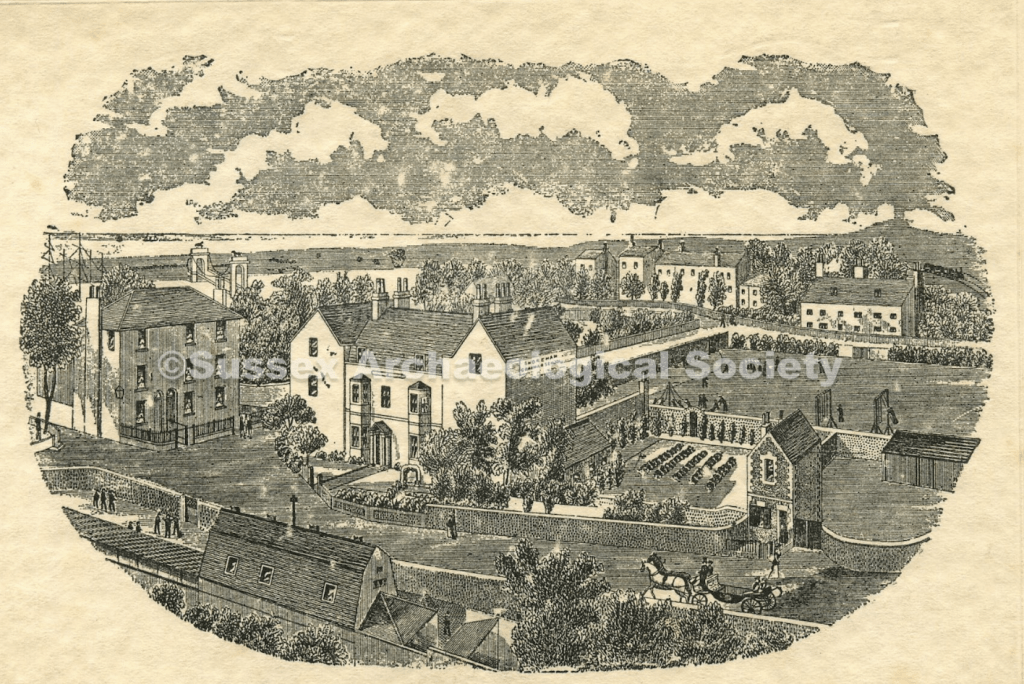
I started at the school in 1944, shortly after the Allied invasion of German-occupied France. The school buildings were centred in Pond Road, and covered the whole block, that is to say, the area of the present community centre, citizens’ advice bureau and car park. The school had its own chapel, with pews, choir stall and organ, on the opposite side of Pond Road, about where the grass mound in front of the health centre is now. The large house facing you as you look south down Pond Road is called Westover, and provided residential accommodation for single masters and a room for piano tuition.
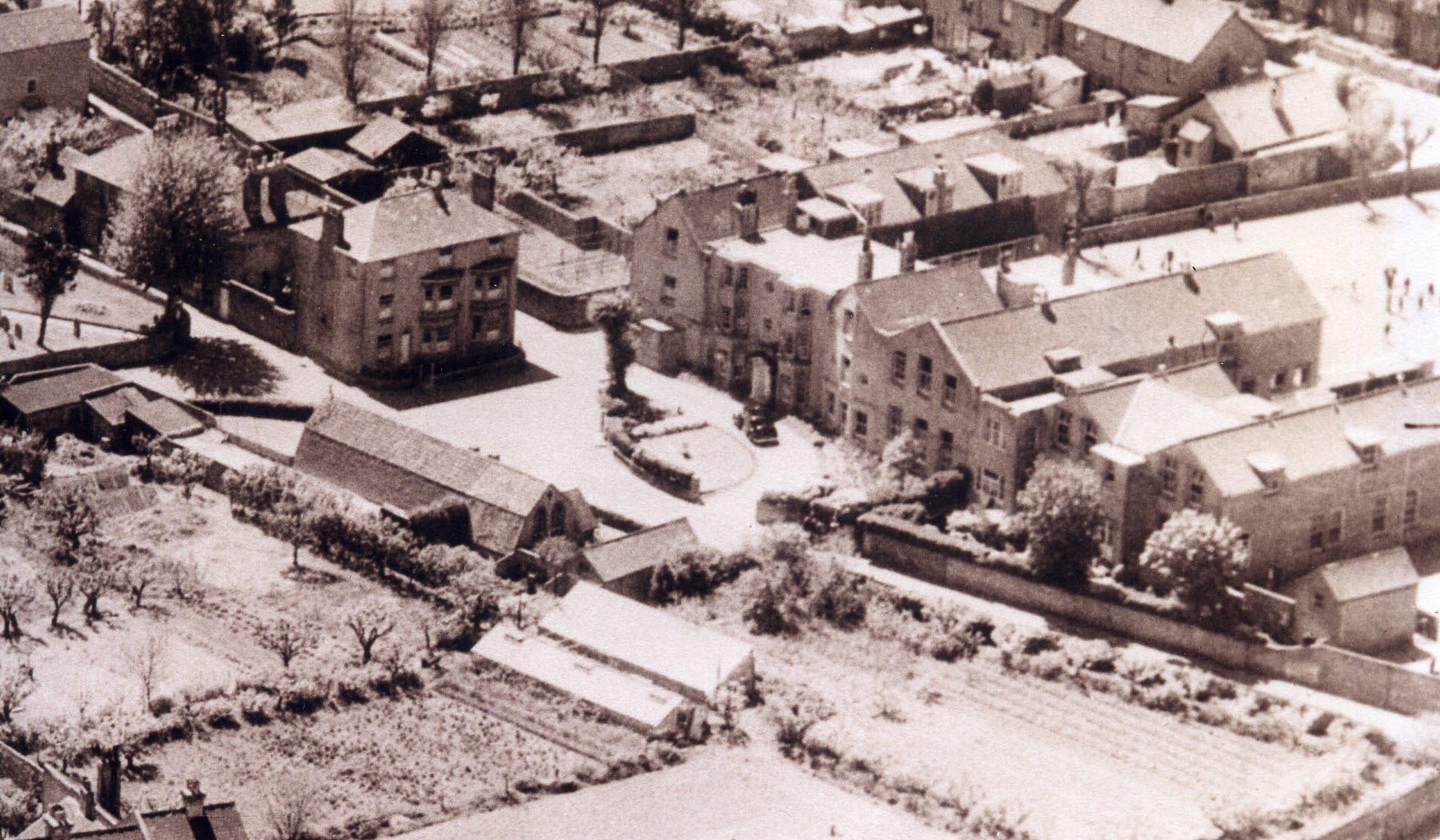
There was also a miniature rifle range used by the school’s Army Cadet Company in St Mary’s Road; I don’t know if the school owned it. You can still see one wall of the range, along the side of the footpath that runs from St Mary’s Road to Western Road behind the health centre. I nearly forgot to mention the bicycle shed in Middle Street, which also has one wall remaining.
The sports field and gymnasium were about half a mile away in Connaught Avenue, on an L-shaped 20-acre site now covered by the Greenacres estate. (How curious that the developers named it thus when they were extinguishing twenty green acres.) The gymnasium was a splendid building on two floors. Upstairs was an excellent hall where concerts could be held. Further into the sports field was a pavilion with changing rooms and a water tap, much appreciated after a game of football.
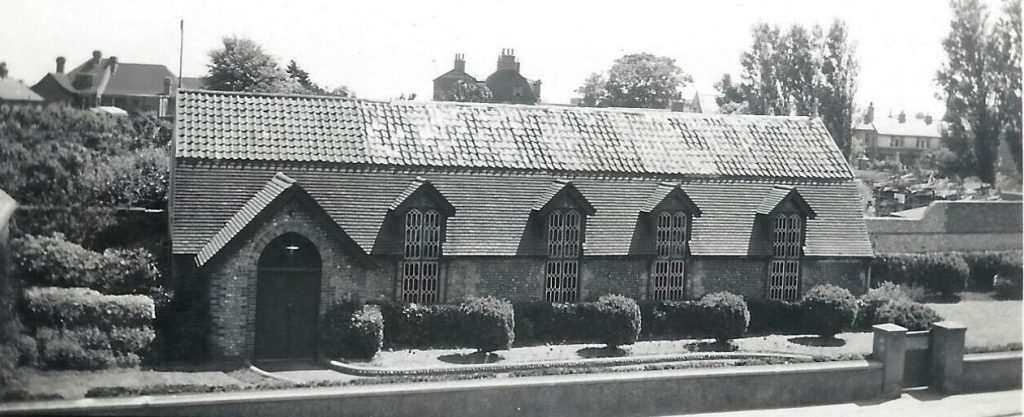
During my first two years at the school there was just a day school at Shoreham; the boarding part of the school had been evacuated to Milland House near Liphook in Hampshire. The National Fire Service and the Army had requisitioned parts of the main building during the war, so the location of classes was subject to various changes as the buildings were derequisitioned.
The main buildings were roughly E-shaped. Looking from across Pond Road, the right hand (north) block housed the staff common room and four classrooms on the ground floor. In my time these were Lower IV, Middle IV B, Middle IV A and Upper IV. Upstairs were the Art Room, toilets and an old disused dormitory, a sort of elephants’ graveyard for old pianos and furniture. Moving left, were the Second and Third forms which formed a route through to the main entrance hall. Stairs led up to the Headmaster’s Office. Under the stairs was a cupboard, where items of stationery were on sale at certain times of day. I had to wait two years to penetrate further south, when the middle part of the E-shape was re-opened to become the Upper and Lower Fifth forms (a garage for fire engines during the war), staff and boarder’s dining rooms etc. The left hand or south wing had the kitchens, with dormitories above, and fronting on to Pond Road was the Headmaster’s house, which I believe was the oldest part of the building.
Behind the school was a large tarmac’d playground. Some wooden buildings stood in the playground. One housed the first form and music room. Another held the science lab. A lean-to attachment to this held the tuck shop, where sweets and soft drinks were on sale by “Ma” Chitty, whose husband “Pop” Chitty was the school caretaker.

There was also a fives court, though it was only used for small-scale football and cricket, both played with a tennis ball. One wall of the fives court was the side of the toilet building.
In the south part of the playground was an underground air raid shelter. I don’t recall an air raid at Shoreham at that period, the Luftwaffe were too busy in France to bomb England much by then.
THE STAFF
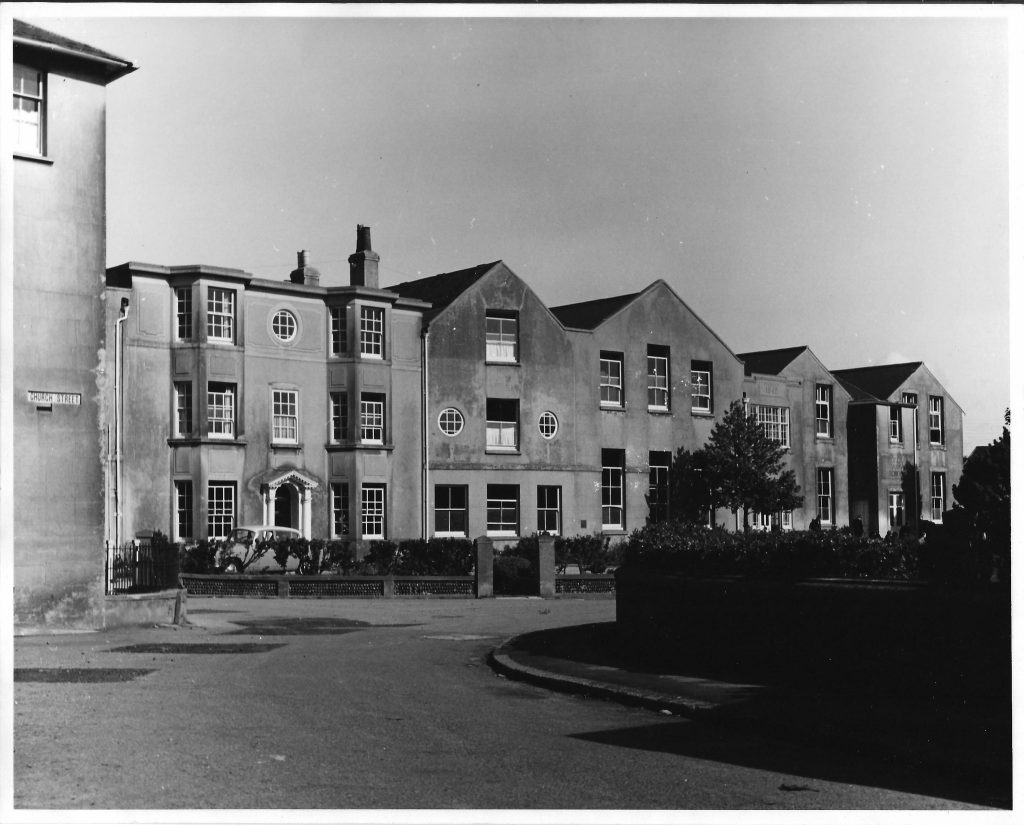
The Headmaster was Kenneth W. Barrell, nicknamed Claude. His name did not suit him. He was lean and rangy, with a dry sense of humour. My encounters with him were frequently at the wrong end of his cane. This instrument of correction was an important part of the school’s method of education. Any master could send a boy to be caned, and this provided the essential sanction to enable the staff to control the boys. The cane was a flexible bamboo stalk that could be bent round into a circle. The flexibility gave it additional acceleration in flight to achieve optimum impact. It hurt like hell, but it was a point of honour not to show this. On one occasion he caned seventy boys for breaking in to the gymnasium when it was empty but still officially occupied by the Army. I was one of the seventy and had already been caned that morning for a separate offence. When I reached the head of the queue he said, “you’ve had yours already today” and gestured me to go!
The junior Maths teacher was Mrs. D. Barrell, the headmaster’s wife, known to the boys as Dora. She introduced me to Algebra, explaining that 3a+2b could not be reduced to 5 anything, as it was like 3 apples plus 2 oranges. I unhelpfully said that that added up to 5 fruit! The Headmaster’s house, having been requisitioned, was not available to the Barrells, who lived in Ravens Road on the other side of the railway line.
The other female teacher was Miss Brady, who taught the First Form, if I remember correctly, every subject. My only encounters with her were at the stationery cupboard, where she doled out pencils, rubbers, etc.
Mr R J Bennett was the master in charge of the Second Form, and also taught PT.
The Third Form master was Mr. D E Evans (“Taffy”) who was also Geography Master. I believe he left to become High Master of Manchester Grammar School.
The Form Master of the Lower Fourth was Mr. Owen D Marsh FRCO, who taught singing and ran the school choir.
For one year we had a Royal Academician as an art master. I forget his name; he had an RAF-type moustache and carried a squash racket, with which he threatened unruly pupils!
After my year in the Lower Fourth there was a major upheaval. The Fire Service and Army vacated the building and the premises were restored to their former use. The boarders returned from Milland House, complete with a full complement of Staff. Mr. and Mrs. Barrell left and Emil A Bruder became Headmaster, taking up residence in the integral Headmaster’s House in the Pond Road complex. I was now in Middle iv A, and being taught by a different group of Masters, Mr. P J McLoughlin, Maths, Mr. J. J. McConagley, Physics, Mr. N E Lewis, Geography, Mr. Badman, History and French, Mr. C N (Paddy) Gray, Art, and Mr. Brailsford, PT. Mr. Brailsford was an army PTI sergeant who had recently been de-mobbed. . When I was in Lower V he introduced a game called Hurley-Ball. This was played with two teams, a football and two posts. Each team attacked the post defended by the other team; goals were scored when the ball struck a post. There were NO RULES! (Perhaps the use of weapons was not allowed, but boxing wrestling etc., were quite acceptable.) We thought this was a wonderful game, but after a term Mr. Bruder banned it due to complaints from the Upper V. We were most disappointed and called the Upper V various uncomplimentary names.
I’m not sure if Mr. J L Wright BA taught me English that year. He certainly did later. There were also H L Wills, Mr George, who wore a ginger coloured jacket, and Mr O’Rourke. I was never taught by Mr. Wills but often chatted to him. I understood him to have been the oldest inhabitant (in terms of membership) of the school, having been educated at Shoreham, gone straight into the Army in WW1, rising to be a Captain, then returning to the school as a teacher. Mr. Wills ran the Scout Troop and organised the annual sports day. I never met Mr. George, and only knew Mr O’Rourke through the Cadet Company, of which he was Lieutenant under (Captain) E A Bruder, the CO. Later we were joined by Monsieur J C Moinat for French tuition. M. Moinat was a Swiss, so I often wonder if my French has a Swiss accent!
Prior to the arrival of the Reverend F R D Kennedy MA there was succession of Chaplains who only stayed a short time. We boys put this down to the bad time we gave divinity teachers, and it says a great deal for Mr. Kennedy that although the boys treated him no better than his predecessors, he stuck it out and kept his association with the school till the end of his days.
THE RED LIST
No description of a school could be complete without reference to the methods for discipline, so sadly lacking today. I’ve already referred to Kenneth Barrell’s whippy bamboo canes, which I sampled on about six occasions. Emil Bruder’s choice of implement for corporal punishment was very different, and in appearance closer to a quarterstaff! He was very sparing in its use, which was generally during assembly. I suppose he felt that public chastisement of a few obtained better results than private correction of many. I never experienced his cane; although older, I behaved no better during his reign than under that of Kenneth Barrell. One master sent me to him to be punished for frequent failure to do homework. All I got was some fatherly advice!
Mr Wills and others have described the Red List and its system of graded mathematical punishments, tables, squares, cubes and square roots of four-figure numbers. In my early days at the school I frequently felt bitter when my three squares took me all of Saturday morning to get right, while worse-behaved boys churned out nine or twelve squares in an hour and went off to play.
Contemporaries will remember that about 1947, the cubes and squares, etc., were discontinued in favour of 40-minute periods of detention, a fairer system, since the naughty boys had to serve their full sentences, regardless of arithmetical fluency.
What few of them will know is that this was due to me!
Being somewhat slapdash I found arithmetic difficult; however, I always had an enquiring mind, and I would play around with sums and explore their properties. Whilst doing this I noticed that 52= 42+4+5 so I tried again with the next number, 62=52+5+6.
It worked for every number I tried, and I quickly realised this was an easier way of doing squares, once you had the first one right (the masters never checked your workings, just asked you to read out your answers, which they compared to those in their book). Had I progressed a little further in algebra I’d have realised that this was just another way of expressing the identity (x+1) 2 = x2 +2x+1.
After that I finished my detention as quickly as anyone. I shared my new knowledge with a few close friends, and no doubt they passed it on to others.
I think it was in the Middle fourth that we graduated to doing cubes, and I was back to square one, or almost; I could take a short cut to square the number. By now I understood the theory of my method for squaring; could it be applied to cubes?
YES! The identity (x+1)3 = x3+3x2+3x+1 allowed me to do cubes without long multiplication!
Again I passed the information around and soon many lads were escaping detention early. Eventually this came to the attention of the staff, and the new method was instituted of awarding punishment by periods. Now the tables were turned, and the badly behaved boys who previously used facility in arithmetic to escape detention early found that unless they mended their ways they would never be free of detention.
The change took place just in time so that I never had to do the dreaded square roots to six decimal places!
SPORTS

For me to be writing anything about sports is a bit like Osama Bin Laden giving a talk on forgiveness; in six years at Shoreham my aggregate sporting achievements totalled one run, three wickets and one goal. You could hardly say bowling was my forte, more a pianissimo! None of the above of course was achieved in representative matches. In mitigation, I will say that my eyesight was rather defective, one longsighted and one shortsighted eye meant that I had no real 3D vision until I first wore glasses, after leaving school.
Being usually one of the youngest in whatever class I happened to be in also meant I was physically less developed than my contemporaries.
When I was fourteen, an under fifteen 440 yards race was added to the sports day events, and I put up the best time in the heats. The prize was a dynamo lighting set for a bicycle. I was convinced that fame and a prize were heading my way. The starter’s pistol fired, and about twenty boys shot forward. Somebody’s foot landed on the outside edge of mine. My plimsoll was hanging half off. With hindsight, I should have kicked it right off. I tried to pull it back on, but had to untie and re-tie it. I shot off after the field to finish a gallant fifth! So ended my school sporting career.
Others careers of course were far more distinguished. These are my own memories, not an exhaustive record. Alf and David Bloom ran rings round their opponents on the football field. Bowyer could stop anything, so he kept goal in winter and wicket in summer. My pal Eric Smith loved what he called “A good tonk” with the bat. John Schofield could deliver a ball that turned profoundly. The Palmer brothers were like fish in the swimming pool, and Barry Bird had an impressive diving ability.
THE BOYS
At the top of the tree were the prefects. Coming from a school of three- to ten-year-olds as I did they all seemed to be grown men, with names like De Normanville, straight out of adventure stories. The prefects could punish boys by giving them “tables” to do. Each table consisted of writing out the two to twelve times tables, and three to six tables was the usual imposition. I was an amused bystander when a prefect gave L G Hallam (later a clergyman) three tables in the hall one afternoon. Hallam pulled out a narrow roll of paper on which tables were ready-written, tore off three and handed it to the prefect.
We juniors didn’t have much contact with the senior boys; we mostly saw them in the bike shed in the mornings. Sometimes you had to move six or eight bikes to retrieve your own. It was best to arrive late and leave early, or arrive first and leave last!
In the Third Form in my time were Richard Batten, whose dad ran the local dairy and supplied the school with milk, Derek Trowell, he of the fine soprano voice and Graham Beamish, son of a TT racer, and himself a future scrambles rider. I have a panoramic photo of the boys and staff taken in 1946 when I was in Lower IV. In the front row I can see Edward (Buster) Gray, son of the famous comedian “Monsewer” Eddie Gray. Buster as all old Shorehamers know became the President of OSA. Two rows back and a few places to the left of the picture is John Bertalot, now a famous expert on choral singing. Towards the end of the row is Mike Samuelson, founder of the Samuelson Film Company. I noticed that I stood next but one to Ken Makepeace, whom I met about forty years later when I visited a company in the Midlands and found Ken was the Works Manager there.
When the boarders returned from Milland, there was some friction between the two groups of boys initially. The boarders envied the dayboys their freedom to walk unescorted around the town. The dayboys felt there was some favouritism, with boarders who attended the Arts Group’s evening meetings getting preference in casting for dramatic events.
The following 1946 School photo has been divided into enlarged sections for this article to enable identification where possible. If you recognise anyone not listed please advise the West Sussex Library Service or the history team on the shorehambysea.com community web site.
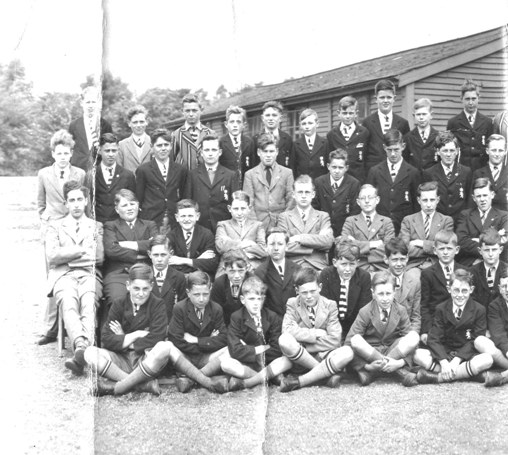
Section 1. (Left to right)
Back Row on Bench – 3 R.W.Batten, 6 Rolph, 8 Budd, 10 Johnson
Standing – 5 Gross, 9 R Barron
Seated – 1 Isaacs, 2 Samuelson, 4 Bird, 6 Gilham, 7 G.A.Trevor
Kneeling – (No one identified)
Cross-Legged – (No one identified)
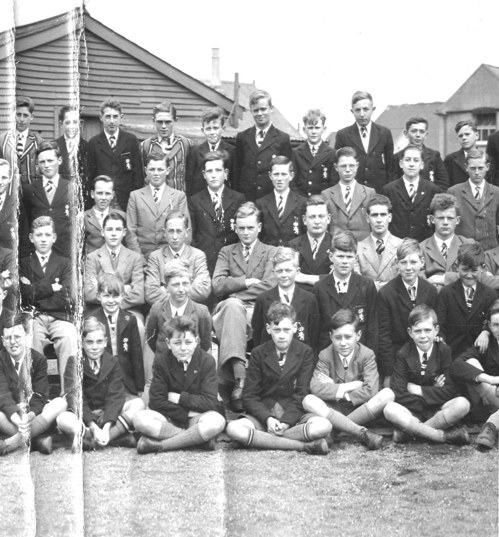
Section 2.
Back Row on Bench – 1 D.Trowell, 2 G.Beamish, 3 J.Saunders, 4 H.Wakelen, 6 Tompkins, 7 McDonald, 8 Rowland, 9 Padbury, 10 Noakes
Standing – 1 G.C.Holder, 3 C.R.Chapple, 4 Ellis, 6 Mawbey, 8 Kensit
Seated – 3 J.Dack, 4 J.D.Bertalot, 5 Spinks, 7 Upton
Kneeling – (No one identified)
Cross- Legged – 2 B.Thomas, 3 Bee
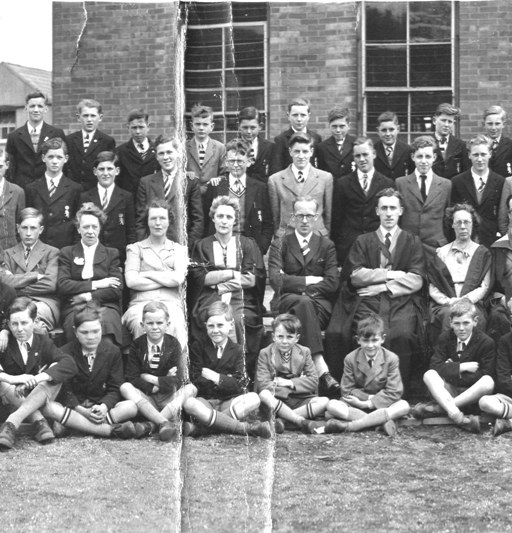
Section 3.
Back Row on Bench – 1 Allwright, 2 Saker, 3 Heathcote, 4 Hardisty, 8 J.Schofield
Standing – 1 Cotton, 2 F.Bishop, 4 J.Wise, 5 Tipper, 7 Trott
Seated – 3 Miss Brady, 5 Mr.R.Bennett, 6 Mr.D.Evans, 7 Mrs. D Barrell
Kneeling – (none)
Cross-Legged – 1 E.Gray, 2 Waterson, 3 R.Bruder
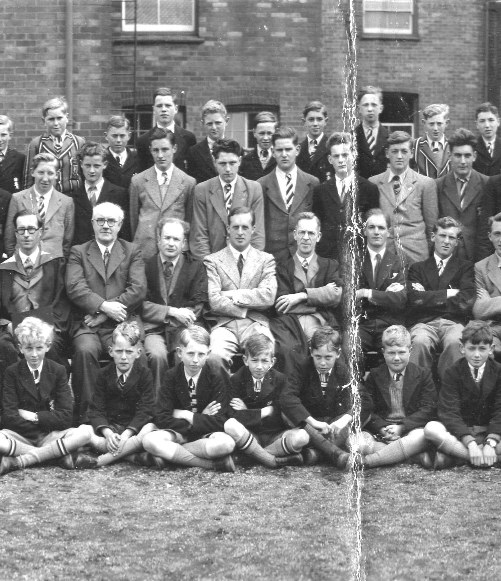
Section 4
Back Row on Bench – 1 W.Dack, 2 Eaton, 3 Nash, 4 B.C.Loveland, 6 G.D.Rudram, 7 Browning, 8 E.R.Smith, 9 L.Soloway
Standing – 4 J. Weekes 6 L.G.Hallam, 7 Nunn
Seated – 1 Mr.K.Barrell, 2 Mr. J.J.McConagley, 3 Mr.George, 4 Mr.Bland, 5 Mr. O. D. Marsh, 6 Mr. Badman, 7 J. May
Kneeling – (none)
Cross-Legged – (No one identified)
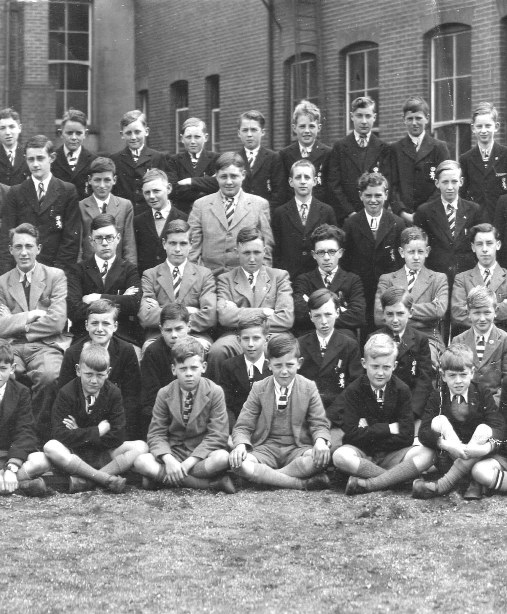
Section 5
Back Row on Bench – 1 L.Soloway (also shown at end of Section 4) 2 P.McGill, 3 K.Makepiece, 5 J.Richardson, 6 Tony Hill, 7 Baker, 8 Wolfe, 9 Maundrell
Standing – 2 J.Gale, 3 A.Brooks, 4 J.Green, 5 Hunter, 6 Cann
Seated – 1 G.B.Shore, 2 K.Windebank, 3 M. Graville, 4 Wagner, 5 R.Burgin
Kneeling – 4 G.Smith,
Cross-Legged – (No one identified)
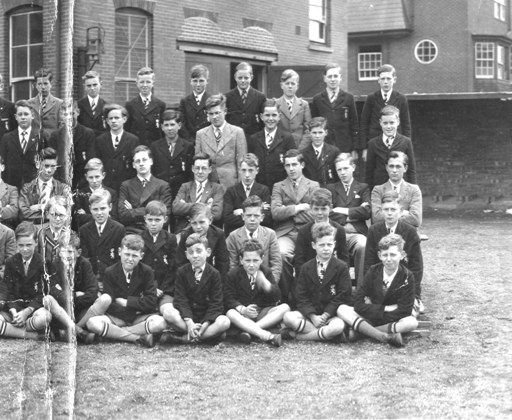
Section 6
Back Row on Bench – 1 Mitchell, 2 R.E.King, 3 P.J.Goodman, 4 F.Toms, 6 I.C.Dymott, 7 R.Westbrook, 8 I.Cotman
Standing – 2 R.Marchant, 4 Monk, 6 I.McGill
Seated – 4 Minton, 8 R.Harwood
Kneeling – 7 Harding
Cross-Legged – 5 Dowsett, 7 Knott
I remember J O C Warner, one of the Warner’s Holiday Camp family. Warner was very strong and had a chest expander that only he and one other boy, K O’Hara, could pull. O’Hara was some years younger than Warner, which made this an even greater accomplishment. An older boy picked on O’Hara once and got a nosebleed for his reward. I met O’Hara years later and was a little surprised to find him a gentle and unassuming man.
In my latter years at the school I remember Michael Bull, who drew and painted so well. Bull’s handwriting was very stylish. He dotted his i’s with little circles. There was Howard-Beard who could run like a greyhound and collared the Victor Ludorum, Graham Holder who could throw a cricket ball nearly 90 yards. I once made the mistake of engaging him in a snowball fight. Not only could he score hits on me while out of range of my own missiles, but his snowballs were almost as large as footballs! Graham one broke a school window throwing – a tangerine!
Radio ham G David Rudram explained to me how a wireless worked, unwittingly starting off my own career in electronics; John Tilbury, destined to be Mayor of Lewes; Peter Goodman, whose varied career included kennels proprietor, teacher and meteorologist. Stanley White was a bright and witty chap, he and I collaborated on some comic articles for the Shorehamer. If anyone ever reads them, the bits in parentheses were added by Mr. Wright!
I passed my school certificate in July 1949 and went to Brighton Technical College, but had to take a gap year due to my age, so I remained at the school for another year working on my own at Science and Maths (there was no proper Sixth Form at that time) and spending a lot of time in the prefects’ common room. There I got to know L G Hallam, (he of the roll of tables!) who was having private tuition in Greek and Hebrew as preparation for a theology course. He invited me one lunchtime to go to St. Mary’s Church with him while he practised the organ. Having been in the school choir I had heard the organ played before but never watched close up. I knew the organ had pedals, but for all I knew they could have been accelerator, brake and clutch! I suppose I must have thought they had functions analogous to the pedals of a piano. So my surprise was considerable when Hallam placed the score of a Bach Fugue on the music rest and I saw it had three staves, unlike piano music with two. “How do you play that line?” I asked.
“On the pedals,” he answered. I watched open-mouthed as a rapid and complicated phrase was played on the upper manual, with an echoing strain following it at a few bars’ distance on the lower manual, and then the great 16 and 32 foot pipes took up the fast melody like a round of three singers, and Hallam’s feet danced, heel and toe, across the pedalboard. The great fugue continued to wind up to a climax and then died down, perfect in every note, to a magical completeness.
I have the greatest respect for anyone who can play the organ. I have some ability on the piano, but on occasions when I have tried an organ I have only to play one note on the pedals and my left hand stops of its own accord (or discord!)
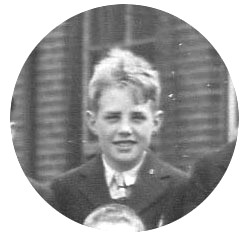
Tony Hill
August 2010


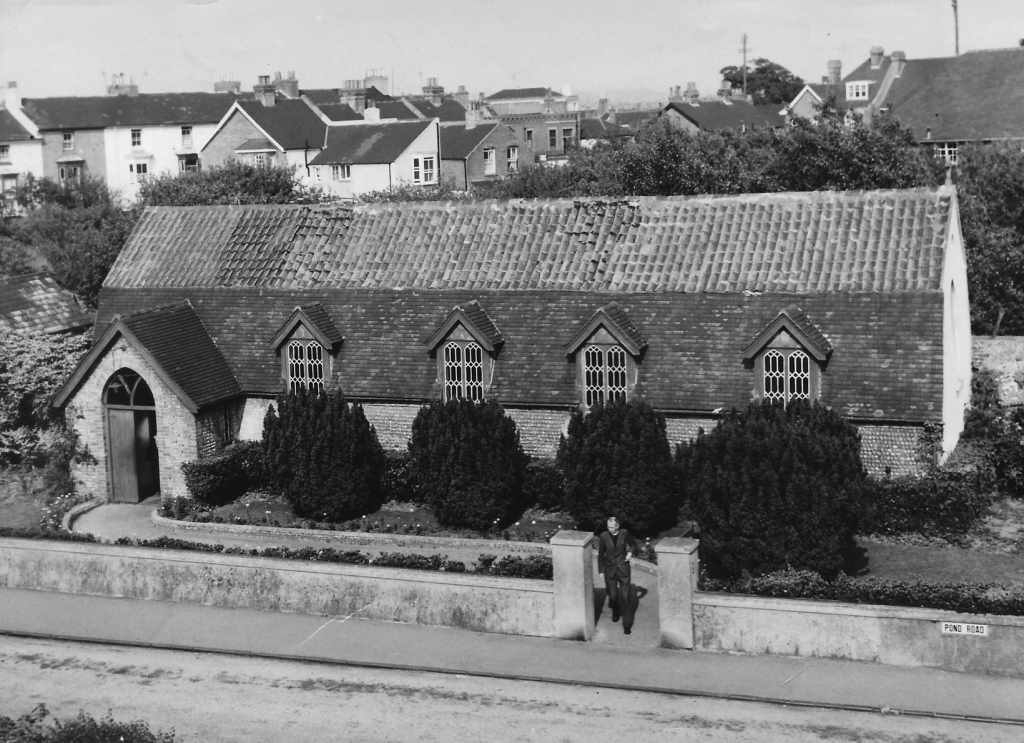

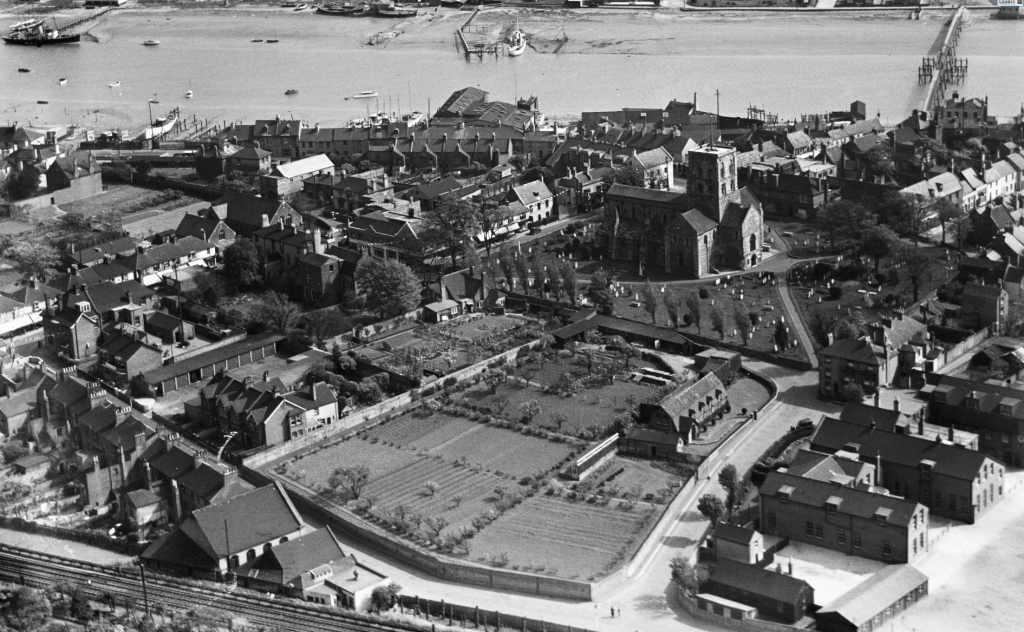
I joined the school in 1942 just as my brother left to take up law with Bowles & Stevens in Worthing for a year before he went into the Royal Navy, rising to a Petty Officer Telegraphist serving in the Med aboard HMS Talybont a destroyer patrolling the Palestine Coast preventing Jewish migrants landing thus avoiding sectarian bloodshed. He finally got to take up law, working as an international lawyer and dying last year in Australia having reared seven children. I left the school to go to Worthing High School since Shoreham had no sixth form and I needed a sixth form course to get to university. I still cherish my copy of the panoramic photo of the school, but you put names to faces – well done.
I joined Shoreham Grammar, about 1960, having failed abysmally my 11+, my father being a teacher a Worthing High and my mother taught sports. After a very unfortunate event with the physics masters (Holt?) Dave Pocket and myself had to leave and we both went to Training Ship Mercury and ended in the Merchant Navy, both Master Mariners. Funnily enough we both now live in Brazil!
I remember the constant battles between Borders (many of them sons of London Italian mafia I think), and day boys, The masters I vaguelly remember, Bebbington, Roe, Clarry, Wally Kennerdy, French, Bennet, Wills et al.
My fathers name is enrico Nardelli and Bennington was his form master in lower 3B
J E Bebbington – Became a senior person with The MacQuarrie Dictionary in Australia
Andrew – Ah, a mention of Mr French my physics teacher – a very nice sympathetic man. We got on very well as I used to cut out and gave to him many very amusing Beachcomber writings. I was there from 1950 -1957. I didn’t know Mr Wills was in WW1 – he never mentioned it, I wish he had. He took several of us boys to Montreux for 2 weeks in 1953 or 4 I think.
It was good to read the names of the masters still there from the late 40s. One could take O Levels in Arabic and Burmese. There were many boys there from the ‘East’. In my time there was school on Saturday mornings but Wed. afternoon off. If snow came in good depth then no school and trips to the hills for sledging. The playground was covered in small stones which were very useful in using in snowballs to attack the vicious prefects.
I remember the tuck shop – I never heard of any other school around which had one – very Billy Bunter type of school, wonderful. One great thing was the day boys were allowed out to eat in any restaurant of choice. For a real proper place we went to ‘The Pickwick’ – about 2/3d for a two course meal – lovely beef. We left at 12.20 and had to return at 2pm! That gave plenty of time to explore and play in the Adur River and also to traipse over to the airfield to watch any plane activity.
My best frind there was Richard Butcher from Worthing. He was a very imaginative person, a skilled drawer and I learnt a lot from him. I have looked for him, sadly without result. There are many stories but enough. Thank you for this site. awakened many memories.
Scrolling thru the comments I came across one I had done before – forgotten all about that. So here below I have repeated some of my memories so please forgive me for that.
I was at the school from 1950 at age of 11 to 1957. I remember Mr French very well as we became sort of friends as I was keen on physics and brought into school many of the Daily Express columns by Beachcomber for us both to laugh at. He mistakenly thought I should try for Oxbridge and could mug up the required Latin in two weeks!
Mr Wills took a few of us 14 year old boys to Montreux for two weeks. There we were visited by a previous a real French French master we all knew – forgotten his name.
I remember the rev Kennedy whom we gave such a hard time. He married the secretary while I was there.
I got whacked once my Mr Bruder in his office which did hurt and got caned on the hand for not knowing the gender of a French noun – she was the French teacher in the 3rd form where I started.
Yes, the prefects did look pretty grown up and threatening. When snow fell the lower form boys had good revenge in hitting the prefects with snowballs embedded with the small stones on the playground. On the first day of a good layer of snow the masters took the boarders up to the downs for sledging and the days boys had the day off. In the wonderful article by Paul it was not mentioned that we had Wednesday afternoon off but had school on Saturday mornings the only school which did that AFAIKnew.
I had a great friend there at the same time and have tried in the past to find him without success and fear he must be dead now as I am 85. His name is Richard Butcher and lived in West Worthing – if anyone has news of him I’d be very grateful to hear it.
Its a very interesting subject to learn the history of Shoreham Grammar School. Can anyone inform me when Shoreham Grammar relocated to St Julians Lane at Shoreham the history of the main buildings and what the premises where used for during the second world war.
I do still remember the swinging sixties known as the counter culture and when I joined Shoreham in August 1970 many of the senior boys dropped out and held many food strikes . I as the reader to read my article posted on the internet called When I was a schoolboy .
After selling off the Pond Road site in 1965 Gordon the school moved to Worthing for a few years then relocated to St. Julian’s Lane in 1968..
https://www.pasttimesproject.co.uk/lsl_browse.php?subsite=ll&story=1001
Prior to Shoreham Grammer’s move to Kingston Lane, A similar private school called Caius School was set up by a Mr Lewis (Headmaster) in the early 1950’s at the Kingston Lane site.
Where my late Brother and Sister went for a while.
My Brother, Edward Hunter is in the 1946 Shoreham Grammer School photo.
Caius School specialised in taking overseas boarding pupils.
i attended shoreham grammer at around the time enrico nardelli was there as was his cousin whose name escapes me just now. as a border i well remember a bit of friction between us and the day boys i guess we were jealous of their access to family life which was denied borders. i remember all the teachers all of whom were mostly fairly good to us given we were probably a bit of a handful as we became teenagers. i was one of many kids whose parents worked abroad, i only saw mine biannually as they did two year tours, this made me unhappy naturally but also served to make me., fiercely indidpendant, i regret having no contact with anyone from my schooldays and would like to chat with anyone who also attended at that time.ray pickavance.
Greetings Ray,
I was at SGS at the same time as you (1958-1963). We spent a great deal of time at the beach and beach cafe over the foot bridge (I have a photo of you there!)
Hello Roger,
I was a boarder from 1956 to 1964 and remember you as a fellow boarder in the latter years; seem to recall your parents lived in Kenya ? Looking through this blog I remember the names of fellow boarders Pickavance and Nardelli (Rico).
I now live in Perth Australia – where are you these days ?
A pity that Ray seems not to have seen your resonse to him.
Oh, yes the footbridge over the river – such good times wandering over there to the beach, looking at the old MTB boats etc. lining the river bank which had people living in them.
I and a few friends would, in the dinner 1 hour 40 minutes, get a train to Worthing and nip down to the Caribbean Coffee House for a quick coffee or to Brighton for a look around. I had some friends who were boarders but never felt there was any envy – probably insensitive.
I went to Shoreham GS first in Clifton Road Worthing then Shoreham 1967-1971. Anyone remember me Richard (Rick) Glover. Some of the faces in the photos look familiar
In 1957,when I was 9 and my father was working in Nigeria, I was sent to S.G.S. This was because we were friendly with the Morgans-Michael was already there and Peter about to follow.
I think I was reasonably happy at the school, although conditions were somewhat spartan. The food was not very good, but hunger and thirst obliged me to eat and drink some things I have since avoided, including tea! School meals were supplemented by food from relatives; large crusts with margarine from the kindly Matron; pies from local shops; and ‘midnight feasts’ of cold baked beans!
England seemed cold after Africa, not helped by wearing shorts always and thin raincoats, topped with the awful caps of the time. The school was divided into houses named for naval heroes. Being in Nelson I had a partly yellow tie.
We slept in dormitories, with my possessions in a tin trunk by my bed. We used to frighten ourselves with ghost stories. The dormitory overlooked St. Mary’s churchyard. Tombs on paving either side of the church door were believed to be those of vampires and none of us would cross the churchyard alone at night!
Most lessons I found interesting, with History and English as favourites, but not French with the choleric Mr.Kent. J.E.Bebbington, the English master was a brilliant reader, enthralling us with such as ‘Moonfleet’. The science master explained how a notorious explosion, of a gas holder, I think, occurred, with the aid of a syrup tin and some coal gas! The music teacher ‘Slimy’Marsh got us singing a lot-good rousing stuff like ‘When Johnny comes marching home’, the’Marseillaise’,and ‘Down among the dead men’. I joined the school choir. Academically I did O.K., but was pretty hopeless at sport, especially cricket.
The school was anxious to keep us out of mischief by occupying us as much as possible. We had lessons every day except Sunday and prep most days. Sunday meant compulsory chapel, the compulsory school walk and writing home. We did, however, have film shows laid on, with as such as Will Hay’s marvellous ‘O, Mr.Porter!’ and Edgar Lustgarten’s murder documentaries!
Every week we boarders would line up to receive pocket money provided by our parents, from Mr.Wills. My two shillings were just enough to buy an Airfix kit. Alternatively there were the delights of the tuck shop, run by ‘Ma’ Chitty. My teeth would be better without all those boiled sweets! I bought a French sword bayonet, for I think 7/6 from the local gun shop-not something permitted today!
The headmaster,E.A. Bruder, known as ‘The Bird’, was a formidable figure. He was in command of the School’s C.C.F., assisted by Mr.Lewis.Bruder bore a certain resemblance to Captain Mainwaring. I didn’t fancy the drill, serge uniforms and blancoing webbing, so joined the Scouts,run by Mr.Wills, which I enjoyed.
By today’s standards, the school sounds grim. However, I had some good friends, like Clive Barloo and Andrew Armspach (my spelling may be wrong); there was not too much bullying; we could go out on our own at times; and some staff, but not all, were kindly individuals. The chaplain, Rev.Kennedy, had his lessons regularly disrupted by bad behaviour, I’m afraid.But he generously invited boys home to tea with his family. With my family abroad, I would sometimes be kindly invited out by the families of other boys.
Being away from home encouraged self-reliance. I joined the local library and read voraciously. I left S.G.S. in 1960, when my family returned to the U.K.
I started at Shoreham in 1956 and spent 8 years there. I remember several of the teachers you mentioned. Bennington was the football coach, and taught history, he was in the hospital with a broken leg when I was in having my appendix removed. Wills organized the school trips, Kennedy was the nicest person I ever met and oh how we abused him. French was the teacher I hated more than any other (enough said) we got into a skirmish in a classroom with a glass/wood divider separating it from the one beside it French threw a chalk duster at me when he walked in the room, came and stood over me telling me to pick it up when I did I slipped and he went through the divider into the class next door where Mr. Wills was teaching Math. I ended up in front of Mr Bruder expecting every type of punishment but got nothing when Mr. Wills came in and told on what French did
There must have been another Mr French. The one I knew up to 1957 was the most laid back, friendly helpful man at the school taking much trouble in the rigours of teaching all manor of boys and was never angry or even verbally abusive to anyone.
I’m sorry you had a bad experience with him but I can hardly believe it.
Poor Rev. Kennedy who deserved nothing of how he must have suffered.
Simon Quarrell
September 1954 to December 1956, ( Age 15 to 17), in town. Contemporaries were Nick Haskins, Mike Butcher, Henley Howard, Jim Butler. Mr Bruder was headmaster and also chief of the CCF. He had several different types of Rifles ( locked in the Armoury), and I enjoyed cleaning them – also learnt to strip & re-assemble a Bren Gun, blindfolded, in three minutes. We played soldiers at Army camp somewhere in Norfolk. Great fun.
I did well in Sport, 3rd eleven, 2nd eleven and then First eleven. My best friend was Aktarzarde ( from Bahrein, and very black )- we were formidable as Wing and Inside Left on the football pitch. We also had a boy ( lot older ) from Persia, called Shah – we watched him Shave !. I was keen on cross – country running. Also on Sports Day, in the 1 mile , I got pipped on the post by Clive Nicks, but he was older and the only boy in the sixth form.
English teacher was “Soapy” Wright- he did inspire me with Richard eye-eye ( King Richard the Second). Kennedy was Religous teacher. Also Mr Wills, Lewes, McClaughlin. We had a young assistant Matron who used to kiss the youngest boys goodnight. I got into one of the beds and got kissed and then slapped ! I also was caned by Mr Bruder for climbing onto the roof to get tennis balls.
Some weekends, we got the train to Brighton and went Skating, swimming, cinema and lots of nosh.
very happy memories and a good all round education
Hello, I remember your name. I joined SGS in 1952 aged 12 as a boarder for two or three years and subsequently as a dayboy (daybug).
Many characters remain in my memory:-
Mr Bruder … The bird, (don’t know why)
Mr watts or White (slimy) English master sarcastic.
“Basher” Bennett ,history.
Mr Wills , French.
Mr Kennedy, chaplain, kindly soul, much abused.
Fellow names in my year:-
Adams, Inkpen, Driver,Mac Gillivray, Millington, Shepherd, Kerley. First names didn’t exist.
Personal friends during my time were, Sandford, Money, Richards, Lawson, French, Dosaj,Willis.
One or two unpleasant individuals:- Newman, Cummings (cadet RSM), Nicks.
Matron Watts, also Dean (fancied by older boys)
Games field ranged from a nice flat pitch for first eleven play, to the rough sloping ‘North Pitch’ where all the useless and uninterested in football were placed, myself included!
I could go on, but that will do for now.
Hello John, I’ve no idea why I decided to look up Shoreham Grammer but I have. You have mentioned names that I remember very well. Mr Bruner, Mr Wills, Ms Watts and Mr Bennett.
You also mentioned a couple of my friends such as Pete Driver and Roger Inkpen.
I left for America in 55 but look back fondly on my years as a boarder at Shoreham Grammar.
Dave Barstow
Thanks Simon for that. I was at SGS during the time you were. Mr O’Rourke tried to get me into his army cadets which I didn’t want but being in the ATC got me out of that but from your time in it seems I missed out on some interesting stuff.
You mentioned ‘Mike’ Butcher. Are you sure he wasn’t Richard Butcher my best friend there. Altho the other names I don’t recognise at all so perhaps another group.
Afternoon.. I have just come across this site and wonder if any of my old year are still around. I joined SGS in September 1967 when I was 12 initially I thinking Worthing (Clifton Road) prior to a move to Kingston Lane in Southwick.
My memories… I remember travelling by train from Chichester ofter with Pete and Jo Goodman who lived in Bosham (wonder what happened to them!) I remember the Head but mostly FRDK Rev Kennedy and the times his seat was nobbled and he was locked in a cupboard. Mr Berridge (Dalek) the Chemistry Teacher, Mike (Nosher) Knight the French and PE Teacher who smoked Gitanes and stank of garlic and told stories about prostitutes in Marseilles. Mr Curtis and his P4 Rover reminded me of captain Mainwaring on Dad’s Army.
I didn’t really enjoy SGS at the time, seemed rather pompous and ‘Tory’ but often wonder what happened to my cohort. Creese, Rackham, Packer, Hartley. Managed 2 O levels but couldn’t really give a damn .. fortunately life took off after I left and a very successful career that I’m now finding hard to give up!!
I wonder if anyone can help. My brother Andrew Jarrett attended SCS in the 1970s. Sadly he passed away a few years ago. He used to talk about a school ghost called Arthur Gorringe…does anyone know anymore about this?
Hi Adam, my name is Stuart Mitchell and I was at SGS from 1969 to 1976, and just found this website. Sorry to hear about Andrew, I certainly remember the name, I think he was a year or two below me. The ghost was supposedly that of a man called Gorringe who hanged himself from the banister of the main hall in the school building. Possibly called the Oak Hall? I don’t know if it was a true story, mostly a handy device for scaring the younger boys I think, it certainly worked for me and I was sure to pass it on in turn. A bit of a badge of courage if one took the dare to walk down the staircase at night! Sorry to be so vague but it was a long time ago, some memories are clearer than others.
Adam,
Sorry to hear about Andy’s passing. I was at Shoreham at the same time as Andy. I do remember him well. He used to suffer with reddening cheeks, I recall. We often used to sneak over the fields for a cigarette. I left Shoreham in 1980. I think he was either 1 or 2 years above me.
1943 I left Culford in Bury St. Edmunds Sufolk as a boarder to join Shoreham Grammar at the time living in Monk’s Close Lancing friends I made were mainly from Lancing Tony Webber, Rob Marchant, Norm Stapleton, Jimmy Allwright. My time at shoreham was enjoyable though I must admit the only time I saw Mrs Barrell smile was when giving me six of her best on the right hand with that cane she always had handy. Having a bet with Jimmy Allwright as to which leg was Conk’s wooden one jimmy said left I right but Jimmy proved to be right by sticking his compass in Conk’s left leg as he passed falling out as he passed me. Football through winter was a good break but Taffy Evans did not seem to appreciate Tony Webbers rendition of “Taffy is a Welshman” after one game but Tony survived. One night in 1944-5 a German Plane dropped a bomb a few houses down from our house destroying three houses I was lucky being fore warned in a dream the previous Friday night lifted all the sheet and blankets catching all the glass from my window as the bomb exploded, my Father was not so lucky opening the blackout curtain to see the plane, caught splinters of glass in his face and chest. I left Grammar in 1947 starting as an Office boy at Brighton Railway works until I was able to start an apprenticeship in Fitting but after three months I left to Migrate to Brisbane Australia where I commenced an apprenticeship in Carpentry . Later starting my own successful building business and retiring at the age of Eighty Three in 2016
I was at SGS 1961-65. I wrote novel, The Clamour King, based on my experiences at the school. It was published by Snowbooks in 2012 and there are still some copies floating around on the internet.
Hi
Does anyone know where the school records went to after the school was closed< My wife's grandfather attended the school at the beginning of the 2oth century. Any information would be much appreciated.
Had my first kiss beside the wall at the playground back gate. A young lady from Southwick as I recall it. Scared the hell out of me at the time but never looked back since then !